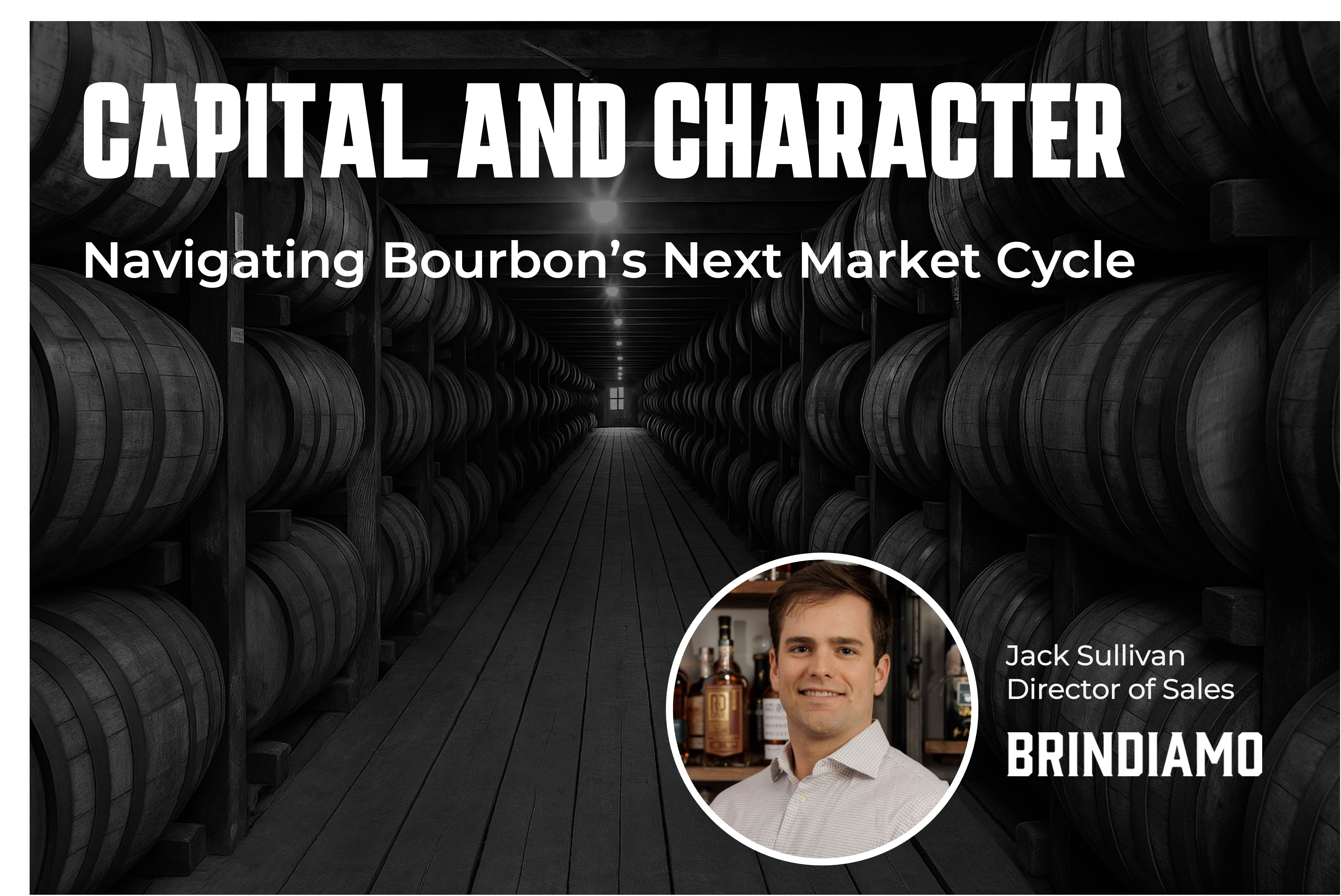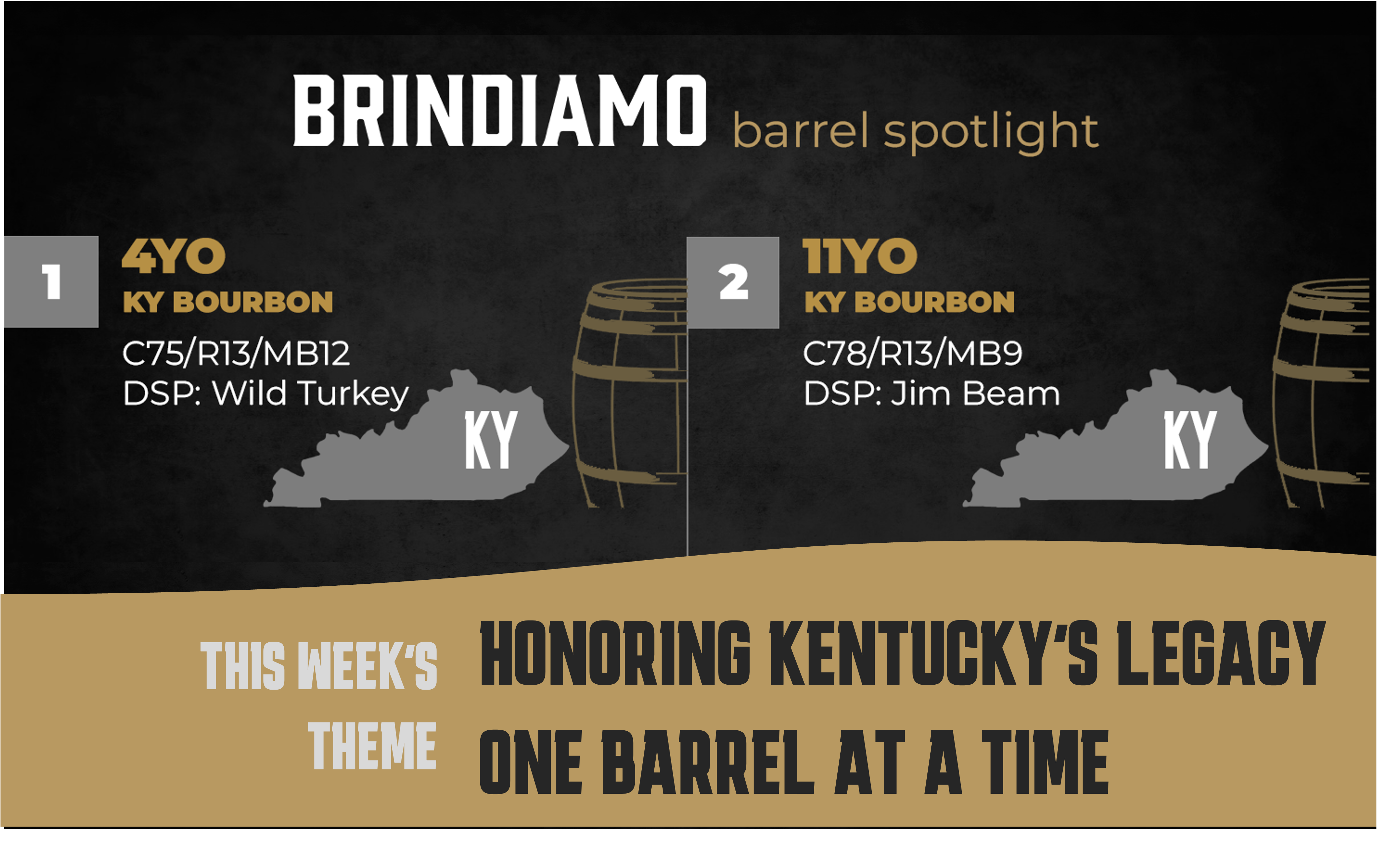Barrel Spotlight: One Mash Bill, Two Unique Paths
Welcome back to the Brindiamo Barrel Spotlight, our weekly email series highlighting the barrels, distilleries, and market dynamics shaping today’s...
2 min read
 Matt Breese
:
Apr 15, 2025 2:54:01 PM
Matt Breese
:
Apr 15, 2025 2:54:01 PM
-min%20(1).png)
Whisky doesn’t just sit in a barrel — it evolves.
Step into any rickhouse, and you’re walking into a living lab where time, wood, and chemistry collide. From the sharp green-apple snap of a young spirit to the antique-like elegance of a 20-year-old pour, every year in a cask unlocks new flavors and transforms the whisky in subtle but powerful ways.
But what’s really happening inside those oak walls? Over the past month, our team has enjoyed reading the detailed posts from John Angus, focusing on the science of whiskey-making.

Infographic inspired by John Angus – “The Chemistry of Whisky Maturation: How Time Transforms Flavour.” Used with permission.
In the first 0–3 years, the spirit is untamed. High concentrations of acetaldehyde and ethyl acetate give it that punchy, solvent-like aroma — often compared to green apples or even nail polish remover. It’s brash, sharp, and still finding its voice.
At the same time, oak lactones begin to seep in, introducing notes of fresh-cut wood and coconut. These early days are the whisky’s rebellious teenage years — volatile, but full of potential.
Now we’re getting somewhere. As the whisky begins to interact more deeply with the cask, caramelisation of barrel sugars introduces toffee-like richness. Vanillin, one of the key breakdown products of lignin in the oak, gives us those signature vanilla notes.
Meanwhile, esters — formed by reactions between acids and alcohol — begin to bloom. Think fruity aromas like apple, banana, and pear. The whisky is softening, rounding out, and developing charm.
This is where the real magic starts.
Tannins from the oak integrate into the spirit, smoothing the mouthfeel and adding structure. Phenols, often linked to smoky or spicy notes, start showing their hand — especially in peated whiskies. And oxidation kicks in full force, layering in dried fruit, fig, and nutty depth as oxygen slowly works its way into the cask.
At this stage, whisky isn’t just delicious — it’s starting to tell a story.
Time brings elegance.
The continued breakdown of lignin deepens spicy and resinous oak notes, while aldehydes introduce nutty, sherry-like complexity. Meanwhile, the so-called Angel’s Share — the slow evaporation of alcohol and water through the cask — concentrates the remaining liquid, intensifying flavor.
This is where seasoned drinkers start to talk about “balance,” “roundness,” and “refinement.” The whisky has matured not just in years, but in personality.
After nearly two decades, whisky becomes something else entirely. Vanillin and tannins soften, bringing smooth sweetness and silkier texture. Ellagitannins help balance structure and bitterness, but there’s a fine line — too much time, and the oak can overpower the spirit.
Oxidation peaks, introducing antique-like aromas that range from leather and tobacco to old books and spice markets. At this age, each bottle is a character study in patience and precision.
A whisky’s age isn’t just a number — it’s a timeline of chemical transformation. Each stage of maturation introduces new compounds, new aromas, and new textures that shape the final flavor profile.
Whether you love the fiery brightness of a young dram or the layered complexity of a 20-year-old bottle, one thing is clear: the barrel isn’t just a container — it’s a collaborator.
👉 see the original post and infographic by John Angus. We highly recommend you checking it out if you're interested in learning more about the science of whiskey aging!

Welcome back to the Brindiamo Barrel Spotlight, our weekly email series highlighting the barrels, distilleries, and market dynamics shaping today’s...

The market for bourbon barrels is bifurcated. Over the course of the last 24 months, the conversation has shifted from how to find whiskey to how to...

Welcome to the Brindiamo Barrel Spotlight, our weekly series celebrating the barrels, distilleries, and market dynamics shaping today’s whiskey...

Nearly a century ago, one of the most devastating natural disasters in American history struck the heart of bourbon country. In January 1937, the...

Creating a distinct whiskey flavor profile requires a deep understanding of ingredients, fermentation, distillation, and aging processes. Whether...

Did you know that, technically, whiskey begins its life as a beer? Before the aging process, whiskey liquor begins as water, yeasts, and malts. While...
Join the conversation
Leave a comment below.